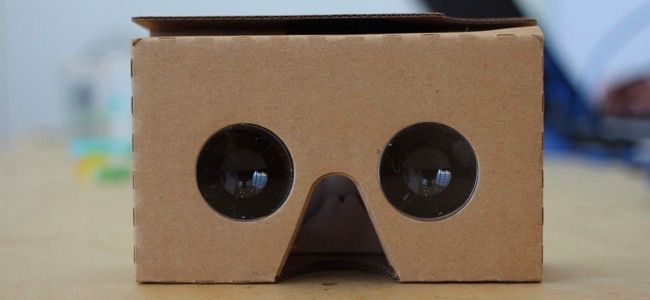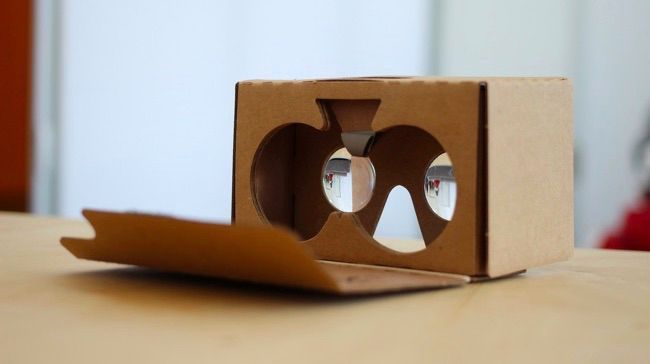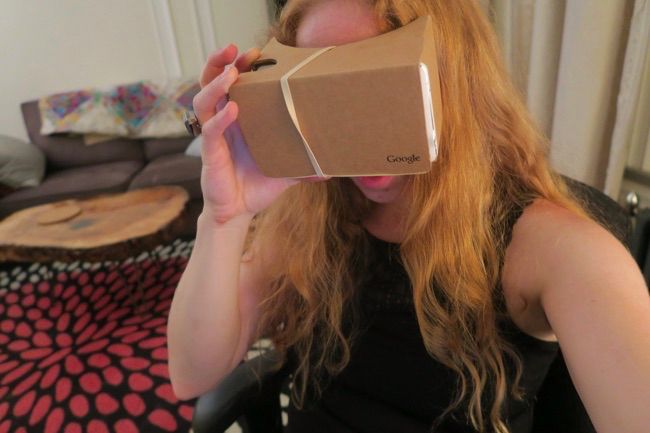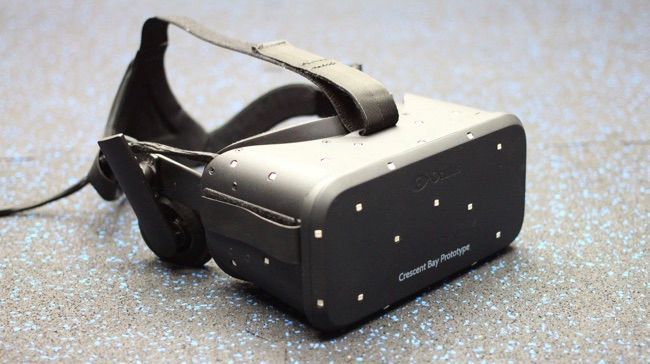Quick Links
Google Cardboard is cool. It's a way to try virtual reality with a cheap headset made of cardboard and your current Android phone or iPhone. But, compared to devices like the Oculus Rift, Google Cardboard is just a parlor trick.
We don't want to go out of our way to slam Google Cardboard. Again, it's neat. But, if you've tried Google Cardboard and weren't impressed, don't worry. It doesn't do a good job of representing the more advanced virtual reality technology on the horizon.
Google Cardboard 101
If you haven't tried Google Cardboard, it's not hard to do so. Google Cardboard uses your existing smartphone as the display -- initially, it only supported Android phones, but it now works with iPhones, too.
To turn your smartphone into a VR experience, Google provides instructions for making a headset out of cardboard, a few lenses, and a magnet to interact with the phone by tapping its screen. Various manufacturers sell Google Cardboard headset kits you can buy for less than $20, assemble them yourself, and try out virtual reality.
You assemble the kit, plop your phone in, open the Google Cardboard app, and hold it up in front of your face to dive into virtual reality. It's a neat trick, and a cool little effect. But it doesn't compare to more powerful systems at all.
Google Cardboard vs. Oculus Rift, HTC Vive/SteamVR, and PlayStation VR
Unlike other VR systems, Google Cardboard has a lot of clear problems. It's repurposing existing smartphones and their screens, which were never designed for this. The average smarpthone's screen just isn't a high-resolution enough display, so you'll see a "screen door" effect where you can see the individual pixels.
Modern smartphones also aren't designed for such low-latency visuals, either, which can contribute to nausea when doing anything that requires looking around. The visuals just don't update fast enough. Our own Matt Klein experienced way more nausea than he expected when he gave Google Cardboard a go.
Due to these problems, Google Cardboard isn't designed to be used with a head strap that attaches it to your head. It's designed to be used like a View-Master -- hold it up to your eyes with a hand or two and look around. But that lack of a head strap makes it less immersive when you move your head around and have to use your hands to bring the headset with you.
Adjustability is also a big concern. Human faces are different, and everyone has different distances between their eyes -- this is known as interpupilary distance, or IPD. There's generally no way to adjust the distance between the lenses or the distance between the lenses and the screen. Dedicated headsets are more adjustable and can be tweaked to work better with your face if the standard Google Cardboard headsets don't work for you. Sure, Google Cardboard is an open standard and you could make a custom headset designed for yourself, but you probably won't do that.
I've Tried the Oculus Rift, and Google Cardboard is Far Behind
These aren't just theoretical problems. While I've been fascinated by VR technology for quite a while, my experiences with it have been mixed. I first tried the original Oculus Rift model at the "Game of Thrones Oculus Rift Experience." Despite glowing reviews, I wasn't all that impressed by the technology. Between the low-resolution of the display and low response time of the screen, it wasn't anywhere near the mind-blowing experience I was promised. It was a good little proof of concept, but not a great experience on its own.
At CES 2015, I had a chance to try the Oculus Rift Crescent Bay prototype -- the third-generation Oculus Rift -- and came away actually impressed. The technology had gotten to the point where the display's pixel-density and response time worked well, and the entire headset was lighter and more compact than the original. It was the most impressive thing I saw at all of CES 2015.
Recently, I decided to give Google Cardboard a go and see what all the fuss was about. Despite glowing reviews, Google Cardboard transported me back to the time when I doubted VR and the technology just wasn't there to make it effective yet. Again, it's a good little proof of concept, but not an amazing experience.
But, having seen more advanced VR system in action -- I've tried only the Oculus Rift, but don't doubt that Valve's HTC Vive and Sony's PlayStation VR (formerly known as Project Morpheus) are similarly high-quality -- I feel compelled to write that Google Cardboard is nowhere near the best the technology can do. With the New York Times about to send one million Google Cardboard kits to its subscribers, everyone needs to know that virtual reality as a whole is much farther along than Google Cardboard.
And, hey -- if you like Google Cardboard, that's even better news! You'll still be even more impressed by higher-quality, dedicated virtual reality headsets.
This isn't news, really. Google itself chooses to emphasize how low-end and experimental this VR system is by making the headsets out of actual cardboard. But, considering Google Cardboard is the only really widely available VR solution at the moment, it's important to point out that it doesn't represent the hardware on the horizon.
Image Credit: Maurizio Pesce on Flickr, Maurizio Pesce on Flickr, Becky Stern on Flickr, Maurizio Pesce on Flickr




